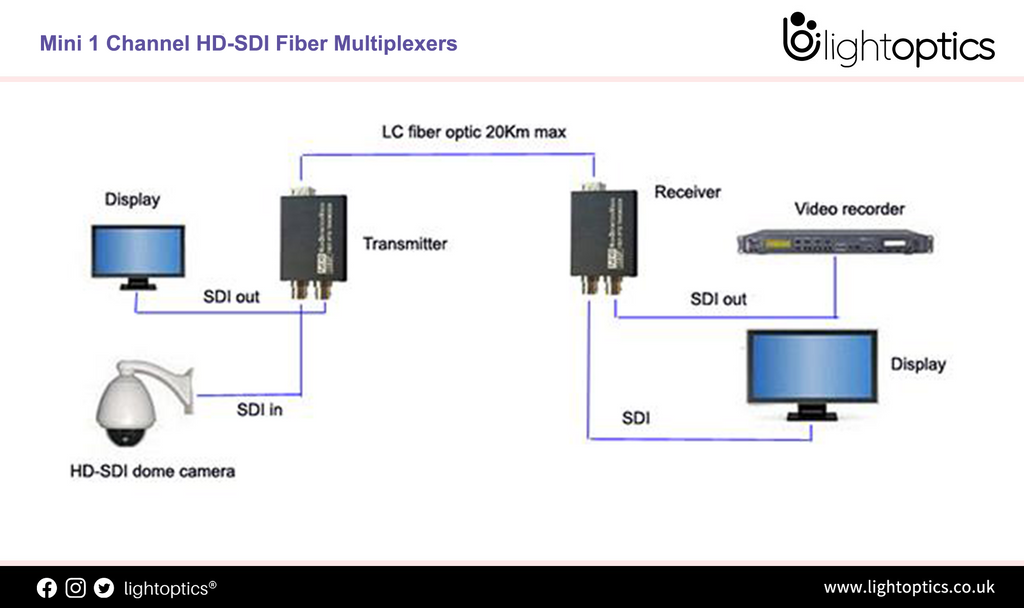-
What Is CEx WDM (Coexistence Coexistence Wavelength Division)
What Is CEx WDM (Coexistence Coexistence Wavelength Division) CEx WDM (Coexistence WDM). Why is it named "Coexistence" WDM? The author will take you to explore its origin. First, let's take a look at Passive Optical Networks (PON). Passive Optical Network (PON) is a technology for information transmission using a point-to-multipoint tree-shaped optical fiber distribution network. The point-to-multipoint physical topology is especially suitable for wired... -
Understanding WDM MUX/DEMUX Ports and Its Application
Understanding WDM MUX/DEMUX Ports and Its Application In large scale digital systems, a single line is required to carry on two or more digital signals. The shortcut forms of the multiplexer and demultiplexers are mux and demux. Some multiplexers perform both multiplexing and demultiplexing operations. The main function of the multiplexer is that it combines input signals, allows data compression, and shares a single... -
What Is The Difference Between 3G SDI vs 6G SDI vs 12G SDI?
What Is The Difference Between 3G SDI vs 6G SDI vs 12G SDI? The SDI standard has evolved along with the world. More SDI editions have been created to handle ever-increasing resolutions (HD, UHD, 4K, and 8K), larger bitrates, and richer colors. As application scenarios such as broadcast, live events or so have an increasingly higher standard towards bandwidth, the SDI standard has witnessed... -
What is an HDMI Extender?
What is an HDMI Extender? HDMI cables can only be so long before you start to run into problems of signal attenuation, which isn’t ideal if you need to transmit a video signal from a source to a display a long distance away. Active HDMI cables can reach pretty far, but the best way to connect up two or more very distant devices for... -
SDI vs DVI: What the difference?
What is SDI? SDI is an acronym for Serial Digital Interface. It is a standard for digital audio and video transmission over coaxial cables. The SDI is a professional video connection that is preferred in production environments because of its outstanding properties, such as its length. It has a length range of 300 feet, which makes it suitable for production and outdoor environments. Also,... -
What Are the Fiber Optic Cable Advantages and Disadvantages?
What Are the Fiber Optic Cable Advantages and Disadvantages? An optical fiber or fiber optic cable is a flexible, transparent fiber made by drawing glass, which are used most often as a means to transmit light between the two ends of the fiber and find wide usage in fiber-optic communications, where they permit transmission over longer distances and at higher bandwidths (data rates) than... -
Introduction to SDI, ASI, HDMI, DVI
Introduction to SDI, ASI, HDMI, DVI Over time, the number of media interface options have grown to meet the demand of the various ways data is transmitted and the numerous devices that process and employ interface translations. Today, we find ourselves lush with media interface options to choose from. The Internet and our insatiable thirst for instantaneous information have driven innovation in the data... -
Full coexistence of GPON, XGS-PON, and NG-PON2
Safe Migration to Next-Gen Optical Broadband Access A gradual and controlled journey to XGS-PON and NG-PON2 PON (passive optical network) architectures are continuously evolving, further improving data rates and service availability. Several PON technologies are currently deployed, with GPON (gigabit PON) having the highest uptake rate. XG-PON1 (10-gigabit PON), the first standard 10 Gbps PON technology, drew the most attention in the early 2010’s,... -
What is 12G SDI?
WHAT IS SDI? SDI (Serial Digital Interface) is a family of digital video interfaces (SDI, HD-SDI, 3G SDI, 6G SDI and 12G SDI), that was first standardized in 1989 by SMPTE (The Society of Motion Picture and Television Engineers). The standard has been widely adopted by the broadcast industry, and is used for transmission of uncompressed, unencrypted digital video signals in TV studios and... -
3G-SDI vs 6G-SDI: What's the difference?
3G-SDI vs 6G-SDI: What's the difference? As applications such as broadcast, live events and fixed installations demand higher bandwidths (4K, 8K...), SDI standards are also evolving, including HD-SDI, 3G-SDI, 6G-SDI, 12G-SDI. To learn more, check out: SDI, HD-SDI, 3G-SDI, 6G-SDI, 12G-SDI: What are the Differences? This article will briefly introduce what is SDI? 3G-SDI vs 6G-SDI between them difference? WHAT IS SDI? SDI (Serial...
Customer Service: sales@lightoptics.co.uk
Shopping Cart
0
Close
Your Cart
Your cart is currently empty.




























